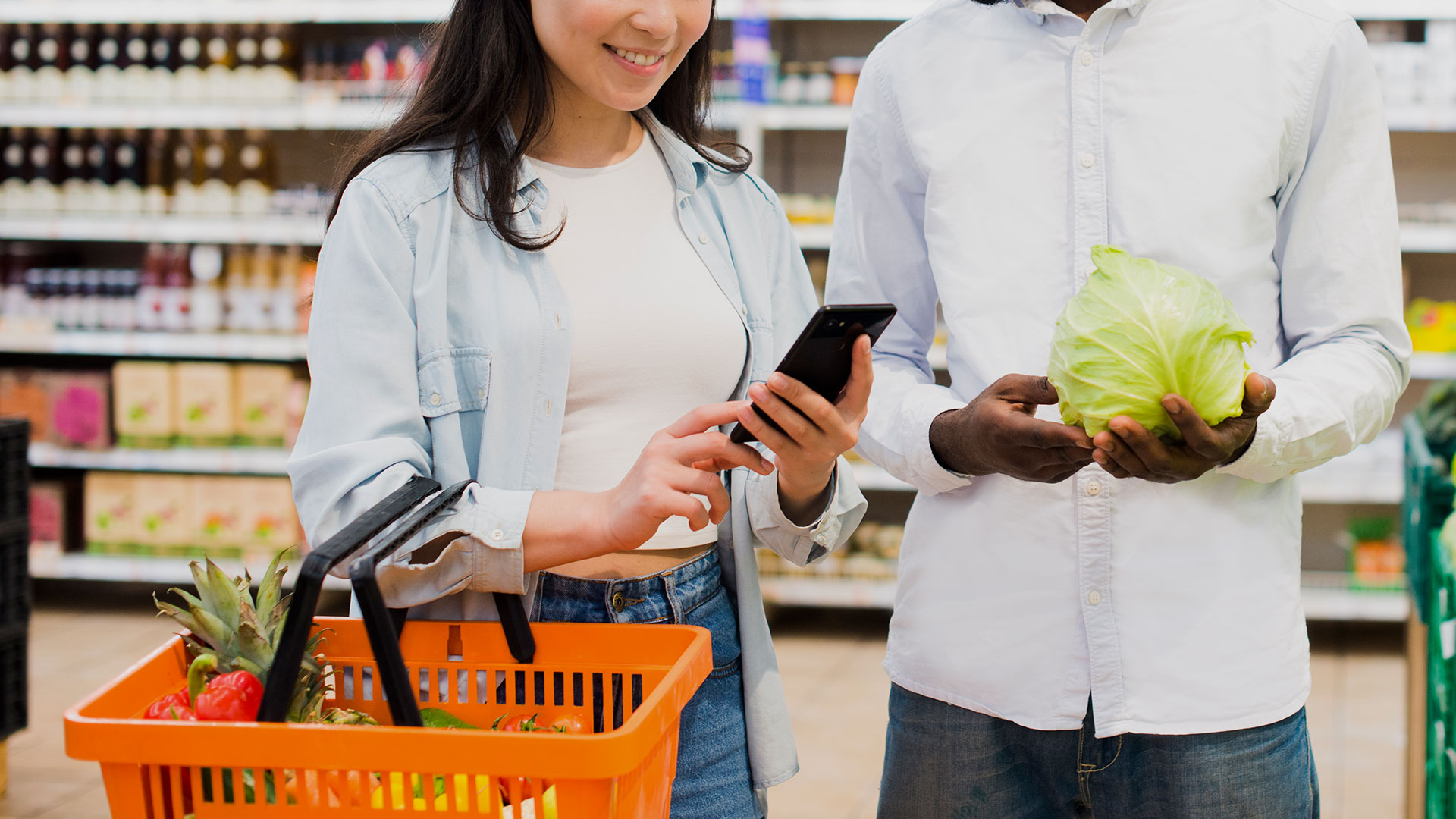
The speed and magnitude of change in the grocery industry present new challenges and opportunities for traditional grocers. The US is on the cusp of a major surge in consumer adoption of online grocery shopping, with e-commerce penetration expected to at least triple in the next decade. Giants like Amazon, Walmart, Target, and Kroger are investing heavily in their grocery e-commerce strategies to grab market share and remain competitive, and incumbents must act quickly or risk obsolescence.
Top 5 ingredients for grocers to drive profitability and build customer loyalty:
1. Invest in your own e-commerce platform
While it may seem easier and more cost-effective to partner with Instacart rather than invest in your own e-commerce platform, there are costly drawbacks and risks associated with outsourcing your digital offering. Utilizing Instacart means handing over the keys to your most valuable asset, your customer data, and loss of control over the relationship with your customers.
According to a recent survey, 43 percent of Instacart users would switch and shop with another grocer if their preferred retailer were no longer available on Instacart. The majority of grocery retailers don’t have a strong or differentiated enough customer proposition to demand loyalty over Instacart. Investing in your own digital platform affords you the ability to turn one-time online orders into loyal customers while maintaining ownership of your brand, your customers, and your future.
2. Select a digital commerce platform designed for omnichannel grocery retail
Grocery retailers face a common set of challenges, and vendors who have grocery industry expertise and grocery-specific capabilities are best positioned to combat them. An end-to-end solution should include core capabilities such as cart checkout, order management, fulfillment, advertising, and content management. Grocery-specific features such as shoppable recipes, shopping lists, and circulars reduce dependence on third-party applications, resulting in a lower cost of ownership.
In an industry that is quickly changing, having a modern platform that can adapt and evolve with the needs of your business is a must. Retailers are replacing traditional monolithic e-commerce systems with cloud-native, headless platforms built on microservices architectures to break away from constraints such as slow go-to-market timelines and high development costs. With microservices, features can be added or removed in an à la carte manner, providing scalability and flexibility in customizing solutions while future-proofing your infrastructure. Headless commerce, the decoupling of the front-end presentation layer from the back-end e-commerce platform, enables unparalleled content-led experiences that increase brand value perception and drive to checkout. Microservices combined with headless commerce provides increased website customization and personalization options that would otherwise be impossible to achieve with legacy systems.
3. Upgrade your search tools
Online sales are heavily influenced by site search performance and product discoverability. With 42 percent of grocery add to carts initiating with search, powerful search and filtering tools are critical to e-commerce success. When it comes to grocery shopping, the customer’s decision-making process is complex, and no two buyer journey is the same.
As opposed to replicating the in-store product discovery experience, online search tools should help each customer easily find products and make informed decisions more conveniently. Thanks to Netflix and Amazon, customers have come to expect recommendations based on similar customers’ activity as well as their own history. Retailers are addressing the challenge of a nuanced user experience by deploying advanced search tools that allow manual manipulation of search results coupled with artificial intelligence techniques that deliver personalized search recommendations.
4. Satisfy consumers’ appetites for convenience and personalization
Consumers are accustomed to the sensory, convenient, and immersive in-store grocery shopping experience. Studies conclude the main reason online penetration remains low in the grocery category versus others is that in the consumer’s mind in-store shopping is still far more convenient. Less than half of first-time online grocery shoppers report that the online experience saved them time. However, 63 percent of shoppers who shopped for groceries online at least three times report that it saved them time, revealing the importance of owning the customer relationship and engaging post-purchase to entice shoppers to return.
Grocers can address the perceived convenience gap and drive incremental sales by adopting digital advertising technology that delivers hyper-personalized experiences, from targeted communications and promotions to advertisements that match their tastes and preferences. As a result of driving product discoverability for customers through personalized ads, retailers can increase product sales while building an incremental revenue stream similar to Amazon, Walmart, and Target.
5. Optimize fulfillment
Profit per order has worsened for 3 in 5 retailers who offer online ordering due to the increase in volume, velocity, and variety of tasks store teams need to perform to support online grocery operations. According to a recent study, retailers incur a loss of $5 to $15 on every manually picked online grocery order, and the loss gets worse when the number of online orders increases.
In an attempt to improve profitability, grocers are embracing “dark stores” which are dedicated facilities to solely support e-commerce orders. Though it’s perceived to increase efficiencies and reduce costs, the dark store fulfillment model is an expensive endeavor with added real estate costs on top of already-negative margins for manual picking. The optimal solution to improve store operations, increase picking speed, and reduce costs is to implement advanced fulfillment tools that can provide the most efficient picking path in the store or warehouse and enable picking of multiple orders simultaneously. With picking optimization tools, grocers have reduced fulfillment costs by 300 percent.


